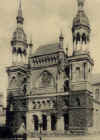
|
New York
Architecture Images- Gone Temple Emanu-El |
|
architect |
Leopold Eidlitz and Henry Fernbach |
|
location |
5th Street and 43rd Avenue |
|
date |
1868-1927 |
|
style |
Moorish Revival |
|
construction |
brick and stone |
|
type |
Synagogue |
|
images |
 |
|
|
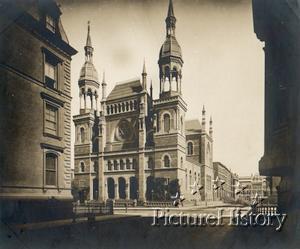 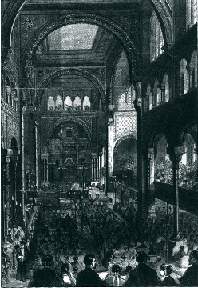 |
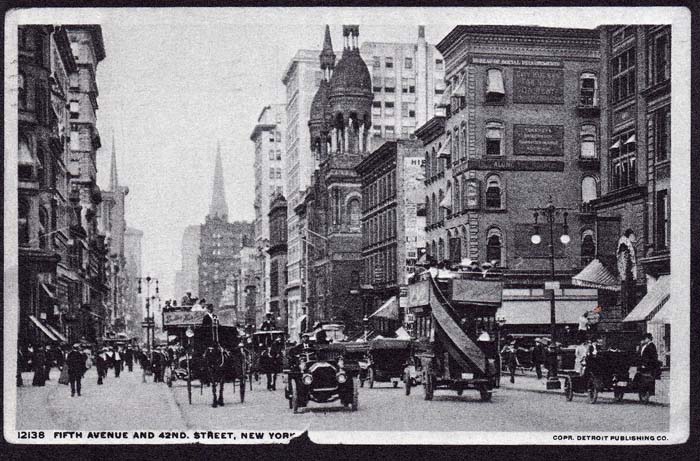 |
|
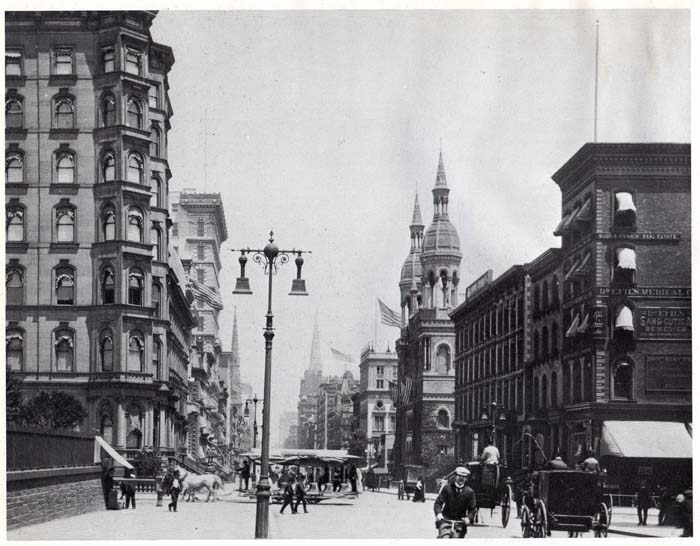 |
|
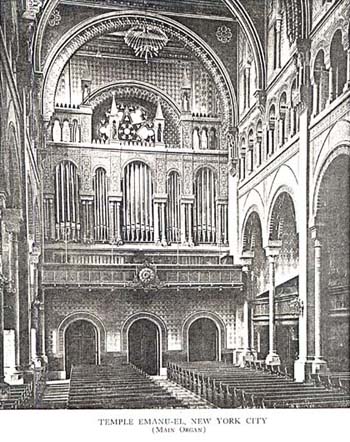 |
|
| info on organ- http://www.odellorgans.com | |
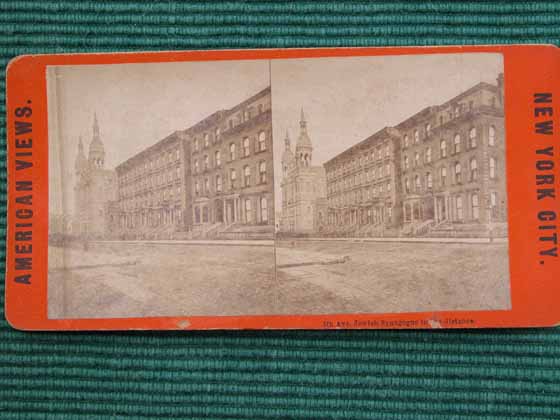 |
|
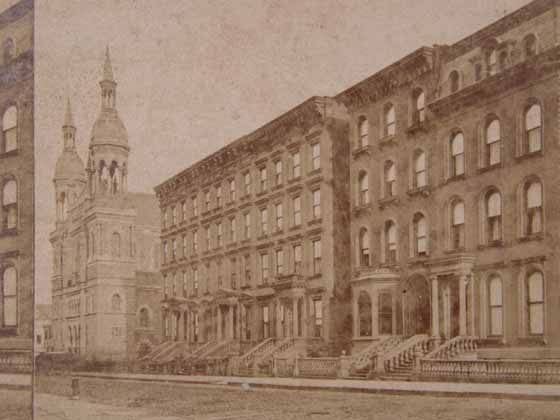 |
|
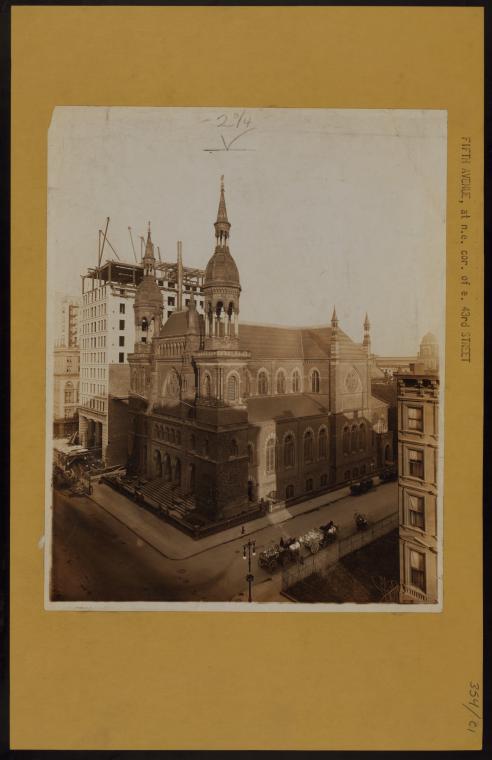 |
|
| Image- New York Public Library | |
| Temple Emanu-El was designed by Leopold Eidlitz, architect of showman P.T. Barnum's Connecticut home "Iranistan." Dedicated in 1868, this Gothic and Moorish structure was decorated in bright tones of yellow brownstone with alternating red and black roof tiles. Only preserved in postcards and illustrations, the synagogue at 5th Street and 43rd Avenue was leveled in the early twentieth century. Gift of Phyllis Yusem. | |
|
In 1868, three years after the conclusion of
the Civil War and twenty-three years following the organizing meeting of
the Congregation, the members of Emanu-El were at last in a position to
erect a sanctuary of their own, and a great sanctuary it was, at the
corner of Fifth Avenue and 43rd Street. There the Temple was to remain
for the next fifty- nine years. The dedication of the new Temple
Emanu-El reflected the substantial economic and financial achievements
of New York City's German Jews. When one remembers that less than a
quarter century earlier thirty- three men with less than thirty dollars
to contribute founded the Congregation, the achievement has to be
included amidst the testimony that the United States, during the middle
decades of the nineteenth century, was a land of opportunity where
freedom allowed for new achievement, a nation where almost nothing
seemed impossible.
Journalists from the city's newspapers took note of the dedication and their reporting reflected admiration. On September 10, 1868, The New York Times announced the next day's event in the following manner: "The latest architectural sensation of this city is the splendid Jewish Temple Emanuel..." A leading New York City German language newspaper said of the Temple in describing the dedication: "The congregation counts the most prominent Jews of New York among its members. Their contributions to the new building, which cost over $650,000, were truly generous." The New York Daily Tribune was exceedingly laudatory in its reporting of the dedication: "A congregation composed of the very elite of our fellow citizens filled to repletion yesterday afternoon the new Jewish Temple Emanu-El. This is beyond doubt the most elegant Jewish house of worship in America, and is among the largest religious edifices in the city." The gradual Americanization of Temple Emanu-El continued, but it was not until the arrival of Dr. Gustave Gottheil, in 1873, from Manchester, England, that the Congregation solved its problems with regard to a permanent English-speaking rabbi. Additional liturgical and ritual changes took place in the 1870s and 1880s, among them the discard of head covering for male worshippers, the disappearance of the Bar Mitzvah ceremony and the introduction of a Sunday lecture in addition to the retention of the regular Sabbath morning worship. The original Merzbacher prayer book, extensively revised by Dr. Adler in 1860, continued in use until the adoption of the Union Prayer Book in 1895, which the congregation continues to use, in revised version, to this day. |
|
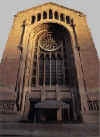
|
Temple Emanu-El later merged with Temple Beth-El, and relocated to the present building on 65th Street. See also the page of its successor, the Temple Emanu-El in the upper east side. |
|
links |
www.emanuelnyc.org |